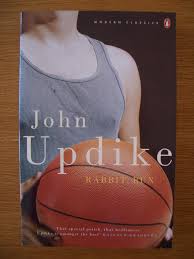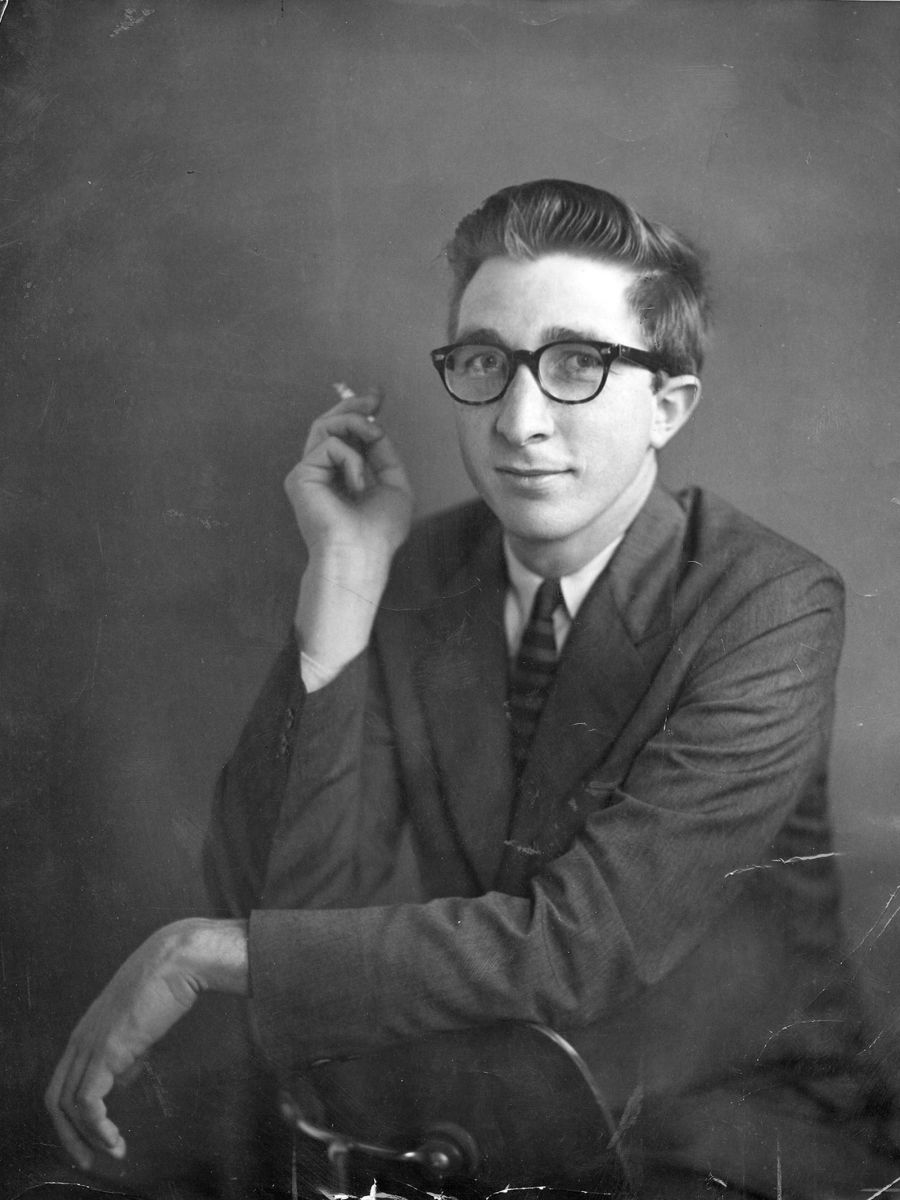 Warmed by wisdom’s holy flame against the fierce cold and abominable gusts, the doughty men of the Austin Athenaeum met in January to discuss an author new to our tribe: John Updike.
Warmed by wisdom’s holy flame against the fierce cold and abominable gusts, the doughty men of the Austin Athenaeum met in January to discuss an author new to our tribe: John Updike.
Updike’s first novel, Rabbit, Run (1960), reads like a cautionary tale. Harry (Rabbit) Angstrom is 26 and, due in part to his celebrity as a high school basketball star, he is almost entirely oblivious to the feelings of others. He is feckless, a coward, and worships his own desires. He is also, at least nominally, a Christian, although he relates to the church in the same way he relates to everyone else around him: never with sincerity, never with depth or engagement or investment, but only as something from which he can get something he wants.
Remarkably however, the reader does not loathe him. Rabbit is looking for something, for “it,” but he does not know what “it” is. Unsatisfied with his elbow-bending, boring, “stupid,” pregnant wife, he leaves home one day with no intentions to return. But 24 hours later he is back in his home town trying to find “it” in the company and attentions of Ruth, his new mistress. By the end of the book, he has bounced around between women like quarry and fleeting good intentions only to utter the most cruel words to his estranged wife at his newborn child’s funeral.
Yet for some reason we are interested in his plight, as apparently modern readers were in view of the series of Rabbit books that Updike produced, one even garnering a Pulitzer. We are all puzzled by our interest in him.
Updike apparently knew of what he wrote being a serial adulterer himself. Rabbit, Run was at least somewhat autobiographical and therefore self-deprecating.
 One theme common to literature is nature, and that is certainly true of this book. Here, nature is symbolized in at least two places: Rabbit’s brief employment as a rhododendron gardener for Mrs. Smith, and at the end in his running through the forest at the end. He is wrestling with his human nature vs. animal nature, the side that responds only to appetites and instincts.
One theme common to literature is nature, and that is certainly true of this book. Here, nature is symbolized in at least two places: Rabbit’s brief employment as a rhododendron gardener for Mrs. Smith, and at the end in his running through the forest at the end. He is wrestling with his human nature vs. animal nature, the side that responds only to appetites and instincts.
Updike’s reputation was as a writer of Christian themes and sympathies, although his liberality with themes of sexuality and his lackluster portrayal of churches and clergy ensured that he was never warmly received by them.
It is worth mentioning the observation about the repeated references to the light in the church window that Rabbit sees from Ruth’s apartment. Each time the description of the light declines, starting with “transcendent” and steadily darkening until it is “a dark hole in the limestone facade.” What could Updike mean by this obvious bit of symbolism?
More than one opinion was offered. But whether it was Rabbit’s eroding connection to the church and faith by his failure to repent, or suggestive of the general decline in the plot and character, his abandonment of the search for “it,” clearly Updike used this and other significant moments and objects effectively in this book.
With the exception of the usual minority of detractors, the book was praised and enjoyed by the group.
February’s book: The Naked and the Dead, by Norman Mailer
March’s book: Under the Volcano, by Malcolm Lowry.
My favorite opening paragraph so far of any of your essays! “Warmed by wisdom’s holy flame” indeed! Thanks for the write up.
On February 14, 2016 4:16:28 PM Austin Athenaeum